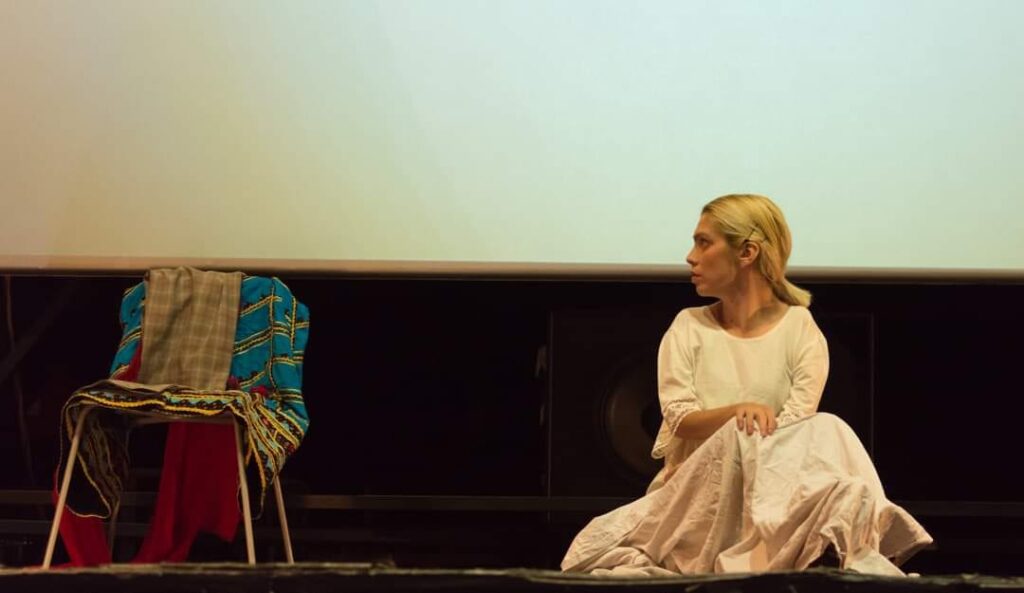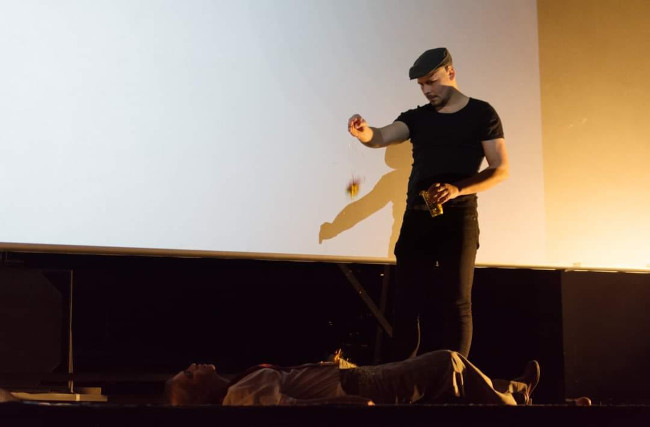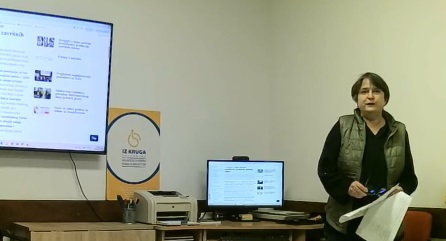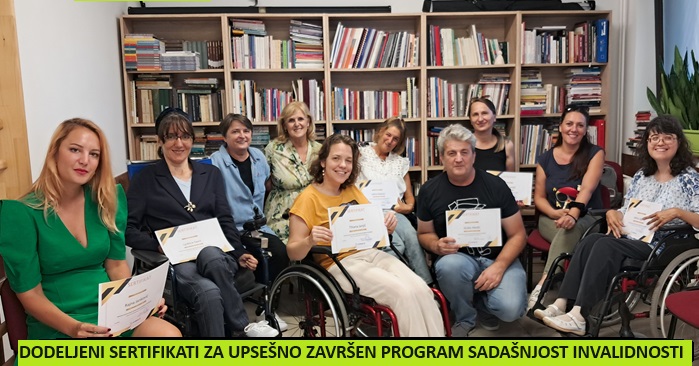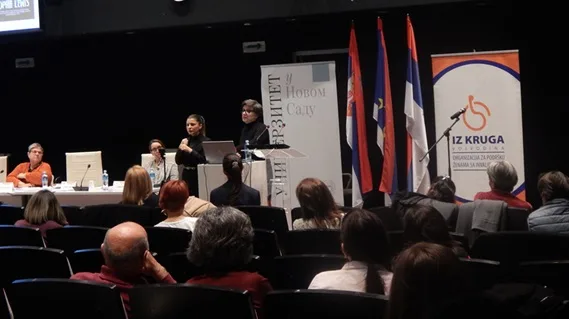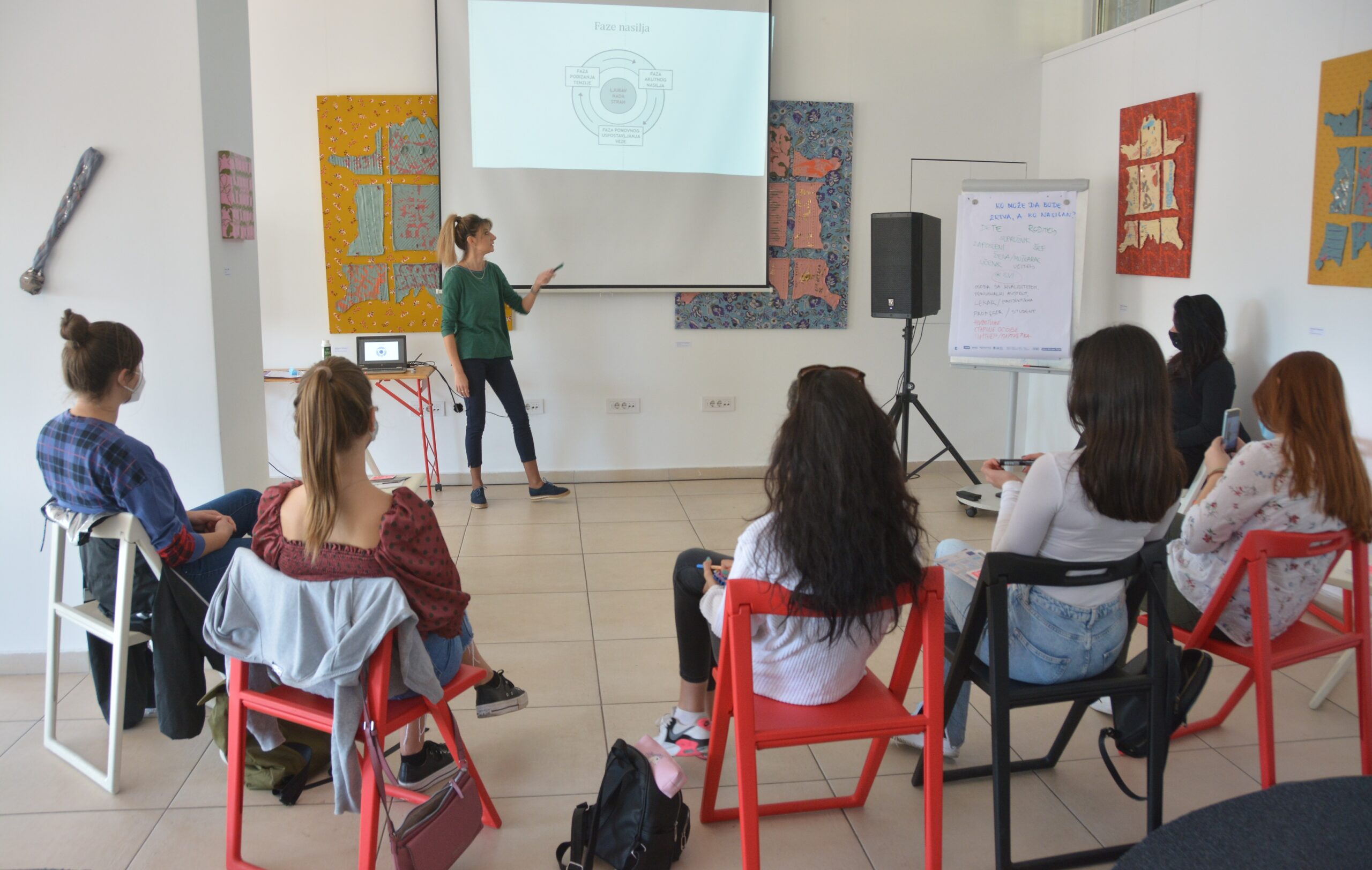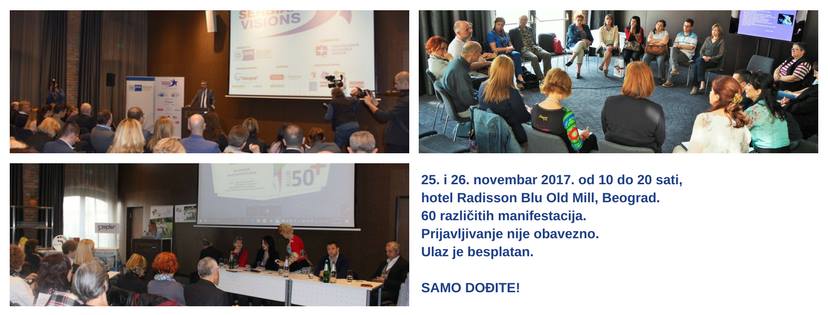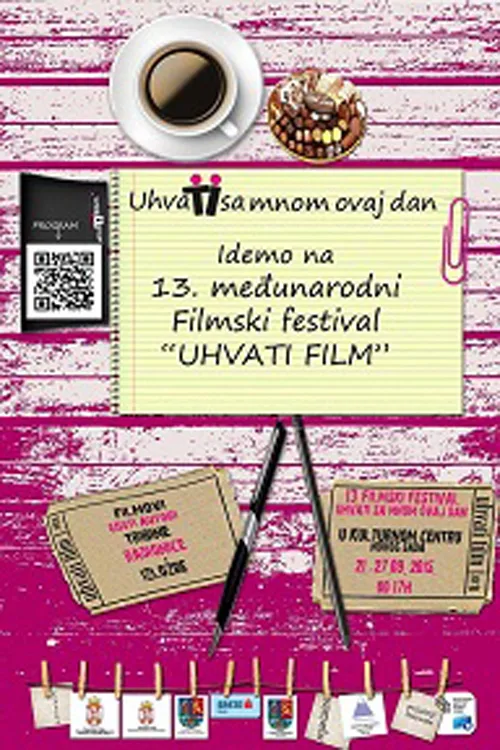Frida States, a performance based on a book by Slavenka Drakulic, Frida’s Bed, played by Tanja Djuric, an actress from Novi Sad, premiered at the film festival Uhvati film (Catch the Movie). After the festival, we talk to Tanja regarding Frida.
Tell us something we do not know about Frida and what you learned from Slavenka Drakulic?
TD: – Slavenka Drakulic uncovered many contexts from which Frida’s various paintings materialized. Art history classifies Frida’s art into surrealism. Slavenka shows it is pure realism. Frida painted her reality exclusively. In addition to learning how Frida felt in particular moments, what she thought about, and how she became what she did, I learned a lot about myself. Or I reminded myself. Usually, when I overcome some obstacle in life, disability-related or not, I do not look back since it looks like it loses significance. When we surmount something, we live more comfortably and take it for granted. Owing to powerful sentences from Slavenka Drakulic’s book, I remembered how important it is to memorize mechanisms and ways we overcome certain situations to apply them later when needed. For a long time, I have been working on myself and realizing that disability doesn’t determine my identity entirely; but it is a part of it. Reading Frida’s thoughts, I recognized the similarities; still, it is strikingly different when the accounts are imprinted into the text and in black and white. Everything is lucent, and in essence, I understood not just Frida but myself better.
Why did you choose Frida for your performance? Is there a part of Frida that stays in you when you get out of the role?
TD: – The director of the Uhvati film Festival, Milesa Milinkovic, recommended the book by Slavenka Drakulic and suggested I should do a dramatic presentation of it. I gladly accepted because up to that moment, I had researched neither Frida’s life in detail nor her artistic work. I knew common facts about Frida, and I wanted to dig deeper and farther from the notion of Frida as a phenomenon. I wished to approach her as a being, a real woman that lived and created in a particular historical context. The way Slavenka Drakulic brings out Frida’s story enabled that. Overall, acting, dancing, and art push me towards self-consciousness, emphasizing the awareness of the being and the body. Dealing with Frida, I was more focused on the body than usual. I suppose it remains when I am out of the role too.
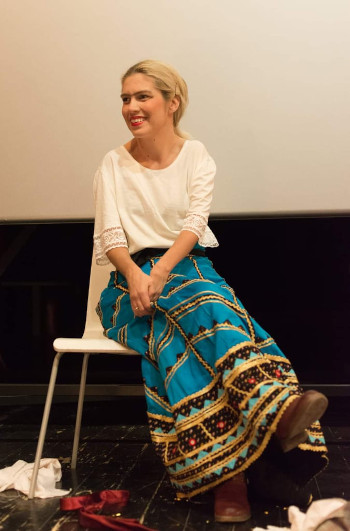
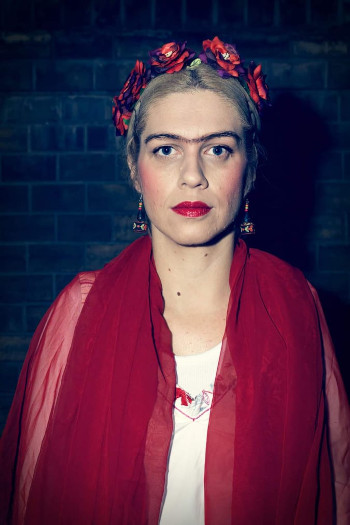
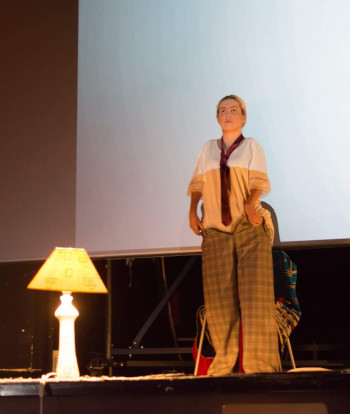
Body fractures, experiencing amputation, miscarriages – how can it all fit into one performance?
TD: – Strenuously. It took a lot of time and wasn’t easy to choose defining moments and essential motives that will present the book in the best possible manner and familiarize the audience with Frida’s life and work. Due to the harrowing ordeal she survived, I needed to find a balance in the dramatic presentation that had to be plausible and realistic simultaneously. Because of this, the performance is permeated with music Frida loved and the projections of her paintings. Music and paintings accompany the ongoing on the stage, which adds to the completer experience of both Frida’s work and her life. In this manner of intertwining the concrete opus of Frida Kahlo and a real-life context, Slavenka Drakulic wrote her book too.
We all deal with just fragments of Frida’s life and Frida as an icon, but how much do we actually know about her opus and her place in art history? Does it appear that gossip about Frida has subdued her art? Or, on the contrary, does it contribute to understanding her art?
TD: – Regrettably, people first discover Frida as a sensation, as an icon. I believe some people know about Frida and maybe do not know she is a painter at all. She is well known from the individual aspect: a brave and battling heroin. More toughened than she ought to be. Slavenka Drakulic talks about that conception of Frida’s strength we are used to, but when exhaustion happens, we straightforwardly proclaim her to be lazy and unchaste. Understandably, comprehension of the disability and the way Frida lived could contribute to the apprehension of her art; still, it looks like the phenomenon of a super-heroine is primary. The value of her art is indisputable, but we know more about her life experience than her creations.
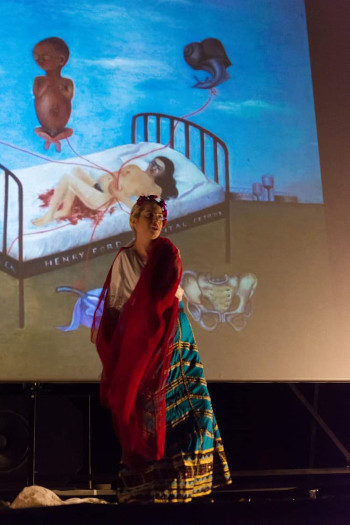
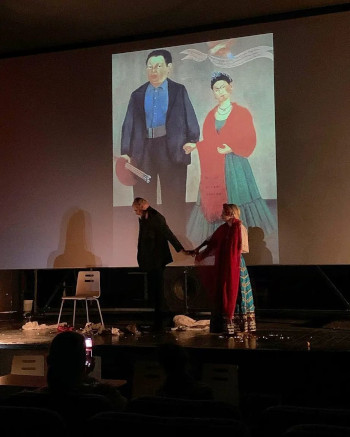
It is common for Frida’s character and works to be equated with pain; we are inclined to believe that pain shaped her identity and art. Would Frida be Frida without all that suffering?
TD: – It is undeniable that pain and suffering are woven in the modus of Frida’s creation. But, before she took up painting, her identity had been marked with a string of other traits: she is courageous, audacious, and unique. After suffering from polio, a car accident, and operations that followed, people attribute those traits to disability. In fact, Frida is what she is, her spirit is such, and I believe she would become what she did without all those sufferings, owing to her essence. She was brave and ready for big things.
Is the universal romanticization of suffering leading us towards epiphany, or is it a blind alley?
TD: – If you ask me, there is nothing romantic in it. Physical pain forces Frida to stay still despite her adventurous spirit. Her body had to rest, but she looked for ways to get out of it and overcome the pain. At this moment, she started painting. The public saw it like this: horrible tragedy led to the birth of incredible talent. It is a romanticization of suffering, but the foundation is Frida’s primal urge to survive. Not just to weather the pain, but to survive literally, to provide a living. Painting was the only thing she had left; she could do it staying still in a bed.
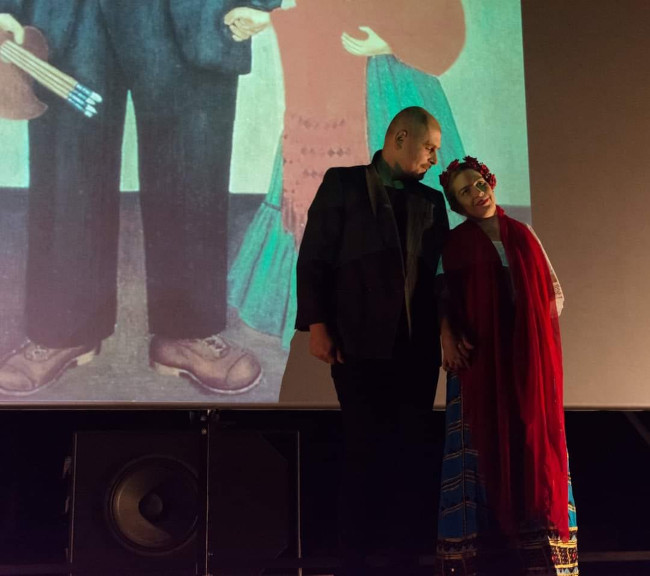
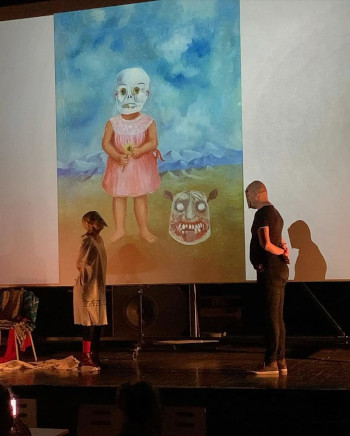
Frida’s relationship with Diego is considered the great love of great people. How much did Frida have to downsize in the name of that marriage? Did an elephant crush the identity of a dove? Great love or even greater subordination, what is it?
TD: – Frida was giving in; she started by wearing the clothes Diego liked. Today it is her distinguished style: colorful dresses, flowers in her hair, heavy make-up, and luxurious jewelry. The style by which we recognize Frida is actually the style she pleases Diego. When he betrays her, she returns to her old manner: she cuts her hair short and wears a man’s suit. In this way, she shows him that Frida, whom he used to love – no longer exists. She paints her self-portrait and redeems herself. It is an ingrained prejudice that it must be a great love if two people are in a relationship or married, and one has a disability. In this case, two great people, so love must be even grander. People usually assume that a partner without a disability makes the sacrifice because of love and companionship, and we are used to the idea that sacrifice doubles love. It is worth more than the element of attraction.
In your opinion, what would Frida say about this conversation from the world of the dead?
TD: – Oh, you didn’t know! Frida is alive! What would she say? She would have been disappointed because certain attitudes and thinking haven’t changed since her time.
What would you like to happen after the performance?
TD: – I wish the play wouldn’t stop on one performance, but keep living. For Frida’s sake, I would like society to be more interested in her creative work: learn about her paintings, what she created, and how her paintings materialized. I always perform in socially engaged performances as a representative of marginalized groups. Frida, too, is a representative of a group – she is one of us. I wish the story would keep rolling; to find some akin to Frida among us today. They might be marginalized, their disability or lifestyle might be primary, and their creativity secondary. I would like that their art gets space and opportunity to be valued appropriately. Without set depreciation or condescension, just like Frida asked Diego to evaluate her work. Disability shouldn’t be a measure or criteria for gaining or rejecting attention. Until inclusion became part of the institutions, I had had to look for alternative, informal ways to perform. At the moment, I am doing my master’s studies in applied theatre at the Academy of Arts. Before that, I had to work in theatre as an amateur and informally. It is significant that we all have the same opportunities to become what we want.
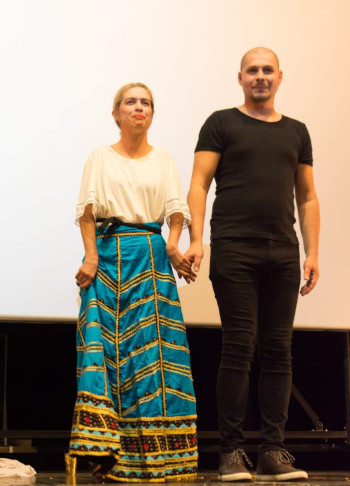
Dramatization, directing, and adaptation: Tanja Djuric
Video-materials: Tanja Djuric and Novak Josic
Stage movement: both
Scenography and costumes: both
Special contributions for decor, costumes, and scenography: Milena Pavlovic, Milesa Milinkovic, Maja Tomic
Technical support and production: KAO Parnas Association, Film Festival Uhvati film
Cast: Frida Kahlo – Tanja Djuric; Pain Demon, Alex, doctor, Maestro Diego Rivera, Death – Novak Josic
Photo – Maja Tomic
Translated by: Suzana Belos
